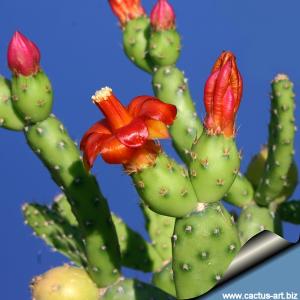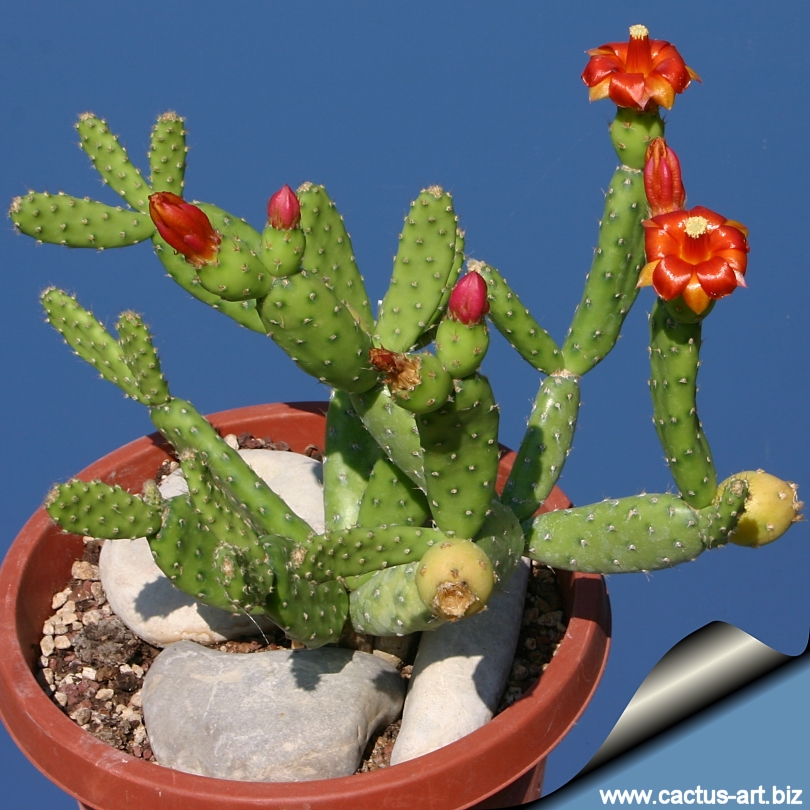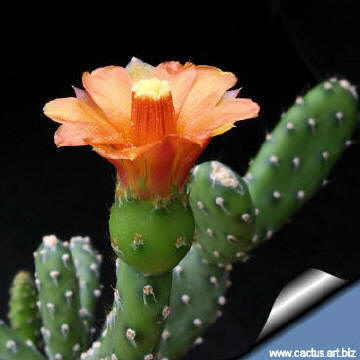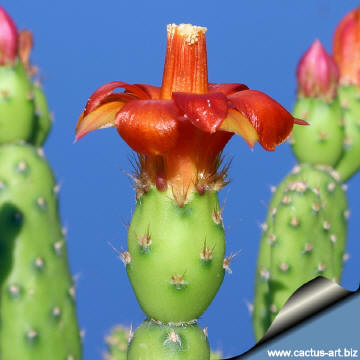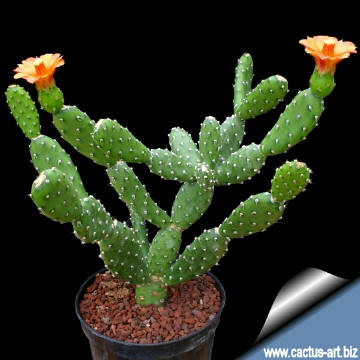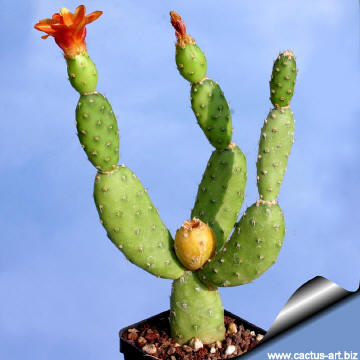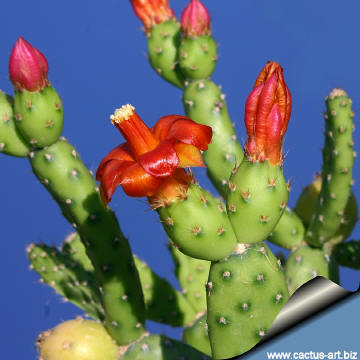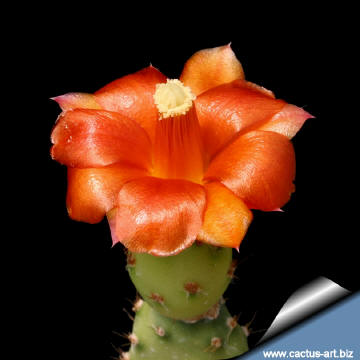-
x
Descrizione
Graziosa pianta formata da piccoli piccoli segmenti che sembra un'Opuntia in miniatura. I segmenti però sono cilindrici, privi di glochidi ma con poche piccole spine setolose. Produce in abbondanza fiori arancione durante un lungo periodo. Family: Cactaceae (Cactus Family) Distribution: Endemic to the arid region of Caatinga in the northeast Brazil Conservation status: Listed in CITES appendix 2.
| |
| Description: The stems resemble those of a miniature Opuntia but are cylindrical (without glochids!) it has only a few occasional short bristle-like spines Flower: Rich orange are pollinated by the hummingbird. | |
| The flowers of Tacinga are pollinated by the hummingbird. Cultivation: It is a species of easy culture, recommended for any collection that needs lots of light with ample airflow. Water regularly in summer, but do not overwater. Water thoroughly only if soil is dry to the touch, let soil dry in between to prevent root rot, keep dry in winter. Use a very porous mineral-based potting mix, with excellent drainage, as can be achieved by the addition of extra perlite or pumice. Feed with a high potassium fertilizer in summer. Care must be taken with watering as they tends to become swollen and untidy in growth habit if given too much water and shade.
| |

